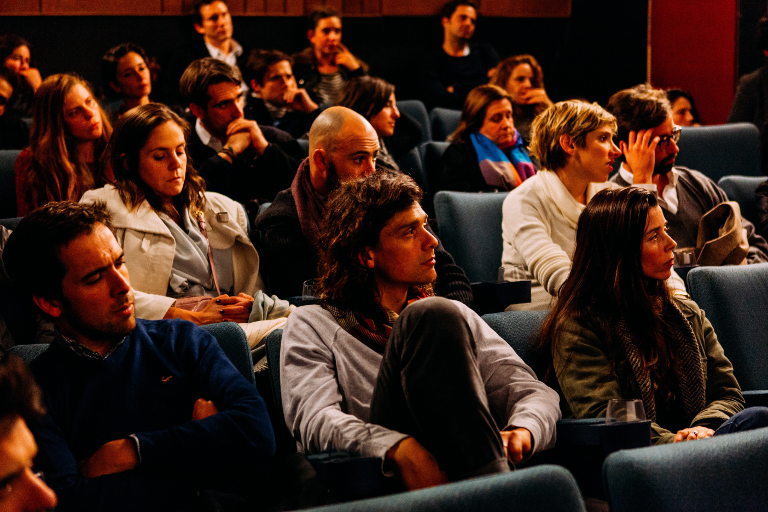This essay was originally published on www.greattransition.org as part of the “The Pedagogy of Transition” Forum.
Our Common Situation
The interlocking triple crisis of capitalist globalization-driven inequality, bought-and paid-for democracies, and pervasive cultures of violence—from our most intimate relationships to the militarism of the United States—has for a long time been bound up with the truly wicked fourth crisis of climate chaos. And now we have the wake-up moment of the coronavirus and the global rebellion for racial justice sparked by the George Floyd uprisings breaking upon these structural, systemic burdens.
The time has come to ask new questions of ourselves as teachers. What role can higher education—and colleges and universities in particular—play in addressing these crises? And how can we draw on our movements and systemic alternatives to create a different kind of university, fit for this purpose?
Sooner or later, climate change, of itself, will force systemic and radical social change on states and other elite institutions. As scholars, activists, and teachers, we are compelled to ask: in what ways can we assist in the birth of a pluriverse of possible paths forward into our “decade of decision.”
NXTerra: A Network Strategy of Providing Transformative Resources to Teacher-Activists of the Climate Crisis
NXTerra is the name chosen for an innovative digital platform designed by teachers in the University of California and California State University systems that was launched in late 2019. Its aim is to provide the materials for a “transformative education for climate action,” and it offers eighteen “Topics” under the broad categories of the climate crisis, climate justice, and critical sustainability.
My own topics on the site are “Climate Justice Movements” and “Systemic Alternatives,” my two best hopes for confronting the climate crisis. Both offer learners practical hope and ideas for engagement outside the classroom. Under the heading of “Systemic Alternatives” are materials on Transition Towns, buen vivir, degrowth, and ecosocialism, among others. And “Climate Justice Movements” offers an introduction to the massively growing and inspiring global network of movements led by young people, frontline and fenceline communities of color, indigenous peoples, inhabitants of small island states, and the movements and people who are doing the work of climate justice in all of these settings.
These are not just theories about radical transformation or stories about far-away struggles but instead invitations and maps for teachers and students who want to learn and connect with them in the real world.
The Nearly Carbon-Neutral Conference is Here
Readers should also know about the “nearly carbon-neutral conference” model developed over the past five or so years by Professor Ken Hiltner at University of California, Santa Barbara. With no carbon footprint from flying, no financial barrier to participation or attendance, and space for open discussion for all who come, this resembles what the world has been doing over Zoom all through the pandemic, except we were doing it five years before the pandemic, and recommend that academic conferences stay this way when and if face-to-face meetings become possible again.
University professors simply have to stop flying around the world to give 15-minute talks, especially if they profess to be aware of the depth of the climate crisis or make that their topic.
Stumbling into My Own Best Practice
For twenty years, I taught about revolution and social change in Latin America, the Middle East, and the Global South generally, but in 2009 the climate crisis woke something up in me, such that I now teach almost exclusively courses like “The World in 2025: Systemic Alternatives,” “What’s Wrong with the World? How Do We Fix It?,” and “Earth in Crisis.” But despite my interest in alternative pedagogies, I was mostly teaching students examples of confronting the climate crisis through the global climate justice movement and creating systemic alternatives, with the help of beautiful free books like Pluriverse: A Post-Development Dictionary, and others, including Paul Raskin’s Journey to Earthland and Jonathon Porritt’s The World We Made.
In 2017, however, two undergraduates visited my office hours and pitched their idea of actually creating a systemic alternative in the community of Isla Vista, adjacent to the university. This has now turned into an intergenerational Transition Initiative called Eco Vista, and my classes no longer just read about inspiriting ideas and practices, they are trying their hand outside of the classroom in their own community with all kinds of DIY projects, from a Food Forest, to Free and for Share shops, creative re-use of the waste stream, and much more.
My newest class is now actually called “Eco Vista: Creating Systemic Alternatives,” and the students have been working on their own Green New Deal and visionary community development planning, as well as artivism and other expressions of the imagination, media savvy, and creativity they possess in abundance. This is the real best practice I would like to put forward to college and high school teachers and students: let’s make the class about changing the world itself!
Conclusions: Toward a Pluriverse of Climate Justice Universities
Exciting visions of a new type of university are sprouting everywhere, and many of them are networked together in the Ecoversities Alliance.
One of the most generative of the new pedagogical projects, the Ecoversities Alliance of more than a hundred schools and projects of all kinds is weaving a growing web of relationships “committed to learning from/within/beyond diversity.” Readers may be familiar with some of the learning spaces involved, such as Findhorn College in Scotland, Deer Park Institute Center for Indian Wisdom Traditions in India, Kufunda Village in Zimbabwe, the School of Engaged Art Chto Delat in Russia, Swaraj University in Rajasthan, Universtatea Alternative in Bucharest, Schumacher College in England, Gaia University in Colorado, Universidad de la Tierra, or Unitierra in Oaxaca, Mexico, and its California counterpart, the Convivial Research and Insurgent Learning initiative.
One of the significant outcomes of their collaboration is the Pedagogy, Otherwise Reader, edited by Alessandra Pomarico, containing essays, testimonies, poems, and images by many members of the Ecoversities Alliance.
Even more a notion than a group or a space at the moment is what I and a few others want to do with Eco Vista U as a teaching/learning/resource space of our Eco Vista community project adjacent—and now we come full circle—to the University of California, Santa Barbara in the town of Isla Vista. So far, we have founded the Eco Vista Climate Justice Press and published a series of e-books, including The Whole Eco Vista Catalogue, a compendium of student and community writing from the first three years of the Eco Vista project.
The title of our first e-book, a work of climate fiction called See You in Our Dreams, may be the most fitting conclusion to this essay!






